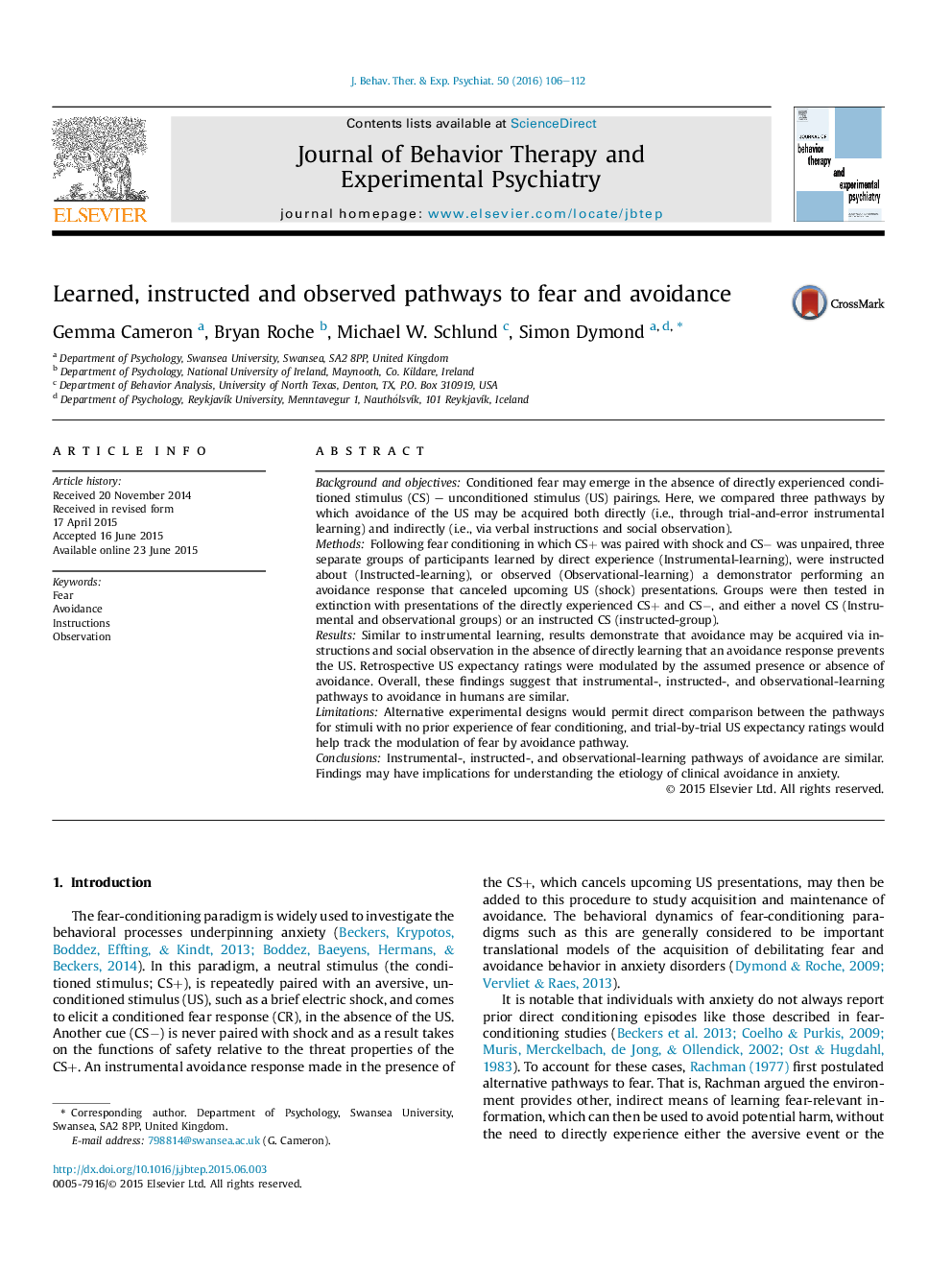| کد مقاله | کد نشریه | سال انتشار | مقاله انگلیسی | نسخه تمام متن |
|---|---|---|---|---|
| 910289 | 1473066 | 2016 | 7 صفحه PDF | دانلود رایگان |
• Avoidance behavior may be evoked in the absence of directly experiencing CS–US pairings.
• Observed and instructed pathways of avoidance are equivalent.
• Confirms and extends previous research on instructed and observed pathways of fear learning towards avoidance responding.
Background and objectivesConditioned fear may emerge in the absence of directly experienced conditioned stimulus (CS) – unconditioned stimulus (US) pairings. Here, we compared three pathways by which avoidance of the US may be acquired both directly (i.e., through trial-and-error instrumental learning) and indirectly (i.e., via verbal instructions and social observation).MethodsFollowing fear conditioning in which CS+ was paired with shock and CS− was unpaired, three separate groups of participants learned by direct experience (Instrumental-learning), were instructed about (Instructed-learning), or observed (Observational-learning) a demonstrator performing an avoidance response that canceled upcoming US (shock) presentations. Groups were then tested in extinction with presentations of the directly experienced CS+ and CS−, and either a novel CS (Instrumental and observational groups) or an instructed CS (instructed-group).ResultsSimilar to instrumental learning, results demonstrate that avoidance may be acquired via instructions and social observation in the absence of directly learning that an avoidance response prevents the US. Retrospective US expectancy ratings were modulated by the assumed presence or absence of avoidance. Overall, these findings suggest that instrumental-, instructed-, and observational-learning pathways to avoidance in humans are similar.LimitationsAlternative experimental designs would permit direct comparison between the pathways for stimuli with no prior experience of fear conditioning, and trial-by-trial US expectancy ratings would help track the modulation of fear by avoidance pathway.ConclusionsInstrumental-, instructed-, and observational-learning pathways of avoidance are similar. Findings may have implications for understanding the etiology of clinical avoidance in anxiety.
Journal: Journal of Behavior Therapy and Experimental Psychiatry - Volume 50, March 2016, Pages 106–112
